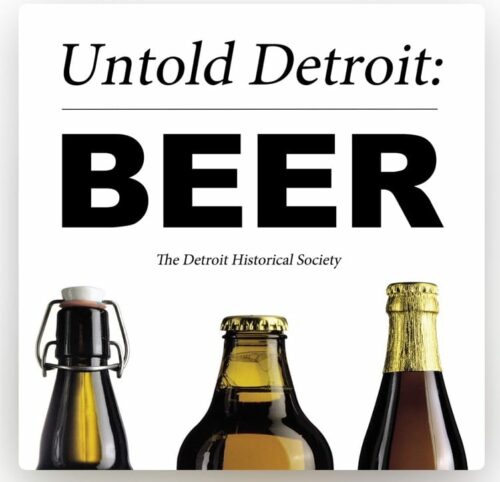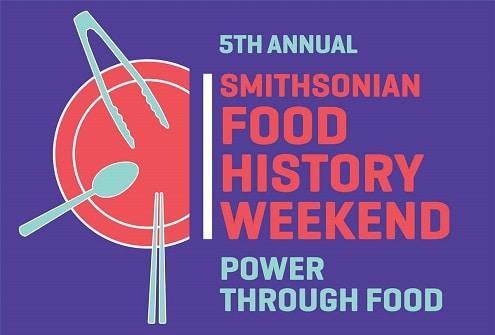Screen Time!
You can almost smell the hops

Follow Sean Inman to the best in craft beer
Screen Time!
You can almost smell the hops
The fabulous L.A. Beer writer Tomm Carroll has fastidiously tracked down historical records of the brewing scene in Los Angeles but a present day issue needs to be looked at, what about the history made yesterday, today and tomorrow.
It may be worth compiling a history now what with some breweries closing and with it the recipes, the shirts, tap handles and other merch along with the stories of how hard it was to open, the first successful beer, that first time canning beer and so on.
With L.A. Beer Week in full swing, I propose that this time each year, those brewery stories get recorded like the NPR booths that roam around the country recording the stories of ordinary Americans does. Each day a different brewery hosts and talks about their history. It is probably not feasible to collect physical stuff and store it, let alone display it but audio can be stored and used for future Tomm’s to use to write about 2022.

I am a sucker for a brewery history book. Even when that book is also filled with recipes (beer and/or food) and other miscellany.
“This book offers you a unique look behind the scenes of St.Bernardus: from the rich history to the brewing process and the recently renovated visitor centre. In addition, you will be served various national and international recipes and cocktails by various top and starred chefs, in which the beers of St.Bernardus play the leading role.”
Obviously this book will not be an exhaustive bit of research, but I am adding it to my want to read list

The Detroit Historical Society has put together a six-part series on beer and brewing in Detroit from the beginning of the city until now and it I shall an interesting slice of history. Each episode covers a time frame and moves along very well with lots of nuggets of info like who was one of the first brewers in the city and why did a certain Mr. Cadillac choose him? Or that Belgians from Flanders we’re a sizeable immigrant group.
Look for it HERE.

Readers of the blog will know that I dabble in spirits and wine in addition to my favorite beer. They will also know that I am an avid reader. So, when I saw that a book has been written about the history of that fancy dressed speed walker by the name of Johnnie. I knew that I had to post about it right after I looked to purchase it.
One day, there will be histories written of long lived beer brands and I hope they get handsome books detailing their histories.

History. Beer has plenty of it if you look behind the curtain of hops. Kenneth Helphand has compiled some really cool photographs including some Dorothea Lange ones in his book about the hop world way, way back in the day.
This is a specific book. You are not going to get what varietals were made or even much talk about the end product. This is first and foremost a curated set of photos of the people in the hop fields. You also get recollections from people who went picking and from newspaper mentions as well. It does lead to a certain sameness. A group of people in front of a row of hops or surrounding a barrel filled with the days pick. But then you look a little closer and you see Chinese faces, Native American faces, recent immigrant faces.
You see, the everyday racist slights in the advertisements for workers. Or a YWCA camp set- up as a safe haven for women working the fields. You also get a glimpse into camp life with dances, movies, company store and living in tents until the harvest is complete.
It also leads me to want a similar book but of the current hop season. Let’s see the faces who grow and pick and bale our hops now.
Also, love to see my last name in a book…even if he is just standing around


For those heading to DC, the Smithsonian is going to show a little more of a beer side, ” “FOOD: Transforming the American Table” is an existing, permanent exhibition that explores the history of food and eating in the United States since 1950. The exhibition’s fall update will highlight new stories about changes in food itself and how Americans produce, prepare and consume food and drink. One of four major new sections is “Brewing a Revolution.”“
Per the Brewers Association press release, “Visitors will see artifacts, archival materials and photographs that originated in the homebrewing and microbrewing movements of California and Colorado in the 1960s through 1980s—the beginning of the craft beer “revolution.” “
Check out more about this exhibit HERE.

Alcoholism and the treatment of is a fascinating topic to view through the historical lens and Christopher Finan goes back in time with Drunks to look at it.
What really stands out is a weird omission from America’s weird relationship with alcohol. Prohibition is effectively swept past with nary a chapter. Yes, talk of the prohibition movement is woven through but Drunks is more concerned with those who are trying to understand and eradicate drunkeneness. Either through kindness or a complete lack thereof.
Once, you key into the format chosen, this works as a look into those who are trying to understand and possibly fix when people are lost in alcohol. But it seems from this reading that nothing has really been learned about the core of why one person may quickly and completely succumb and another drink more but be in control.
Genetics? Nature vs. Nurture. Finan’s book doesn’t really answer this. It all comes back to AA, which is fine. I, personally, don’t have any quibbles with how they approach this problem. In fact, I believe it is probably the best avenue overall. But that makes this book a long windup to a quick answer. You need a village to raise a child and to monitor those who drink.
Maybe, I am in the mood to learn more about the modern recovery and abuse issue industry and how it works and fails and charges way too much.

The thought of keeping the recipe for Fried Ice Cream Stout or the Planters IPA-Nut beers might not seem like something that needs to be saved there are many brewery items that should be, this was brought up in a Facebook post by Mitch Steele from New Realm Brewing…
If you are a professional brewer, ask yourself: “will beer historians 100 years from now be able to look at your recipes and figure out what you were doing? Will your brew logs even be available to look at?” Important question that most brewers these days probably don’t even think about, but this is such a critical time in brewing history it would be a shame if records are lost forever because people don’t take steps to preserve them.
I would think that the local guilds would be the best place to hold that information. Granted most guilds are usually small operations with limited if any actual work (storage) space. But with the “cloud”, recipes could be housed (locked up of course for only that brewery to see) Photos of construction and before/after photos could be stored as well as other historical ephemera. It could be the work for an “intern” or college program. I have seen my own college, Linfield create a wine archive and maybe USC or UCLA could be interested in starting something similar or maybe ask Occidental or a smaller D2 or D3 school to become a partner.
What would an even better “get” would be to StoryCorps all of the breweries. Even past failed ones to get a full picture of the history of the rebirth of independent beer in Los Angeles.
Browsing the beverages section of the lovely Vroman’s Bookstore one recent day, I saw this on the shelves and snapped a quick pic…

Lager by Dave Carpenter dives into the world of the famous style and gives you history and recipes in one hard-bound book.
Carpenter has the credentials to trust as a “longtime beer and home-brewing writer and the Editor in Chief of Zymurgy magazine.”
Nuggets of wisdom inside the book include:
“Why does lager, not ale, dominate world beer production, despite its comparative difficulty to produce?
Why are certain European styles like Vienna lager more associated with brewing in Mexico than on the Continent?
What does St. Louis have to do with České Budějovice?
What role does lager play in today’s expanding craft beer landscape?”